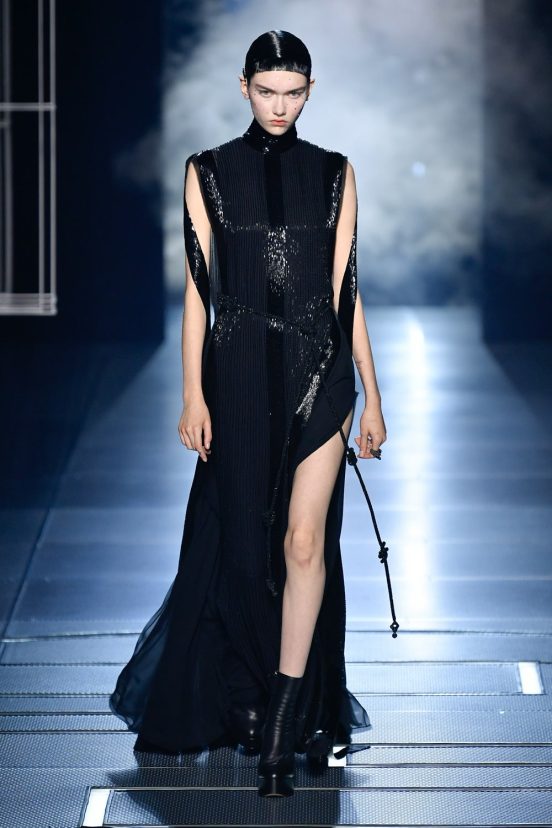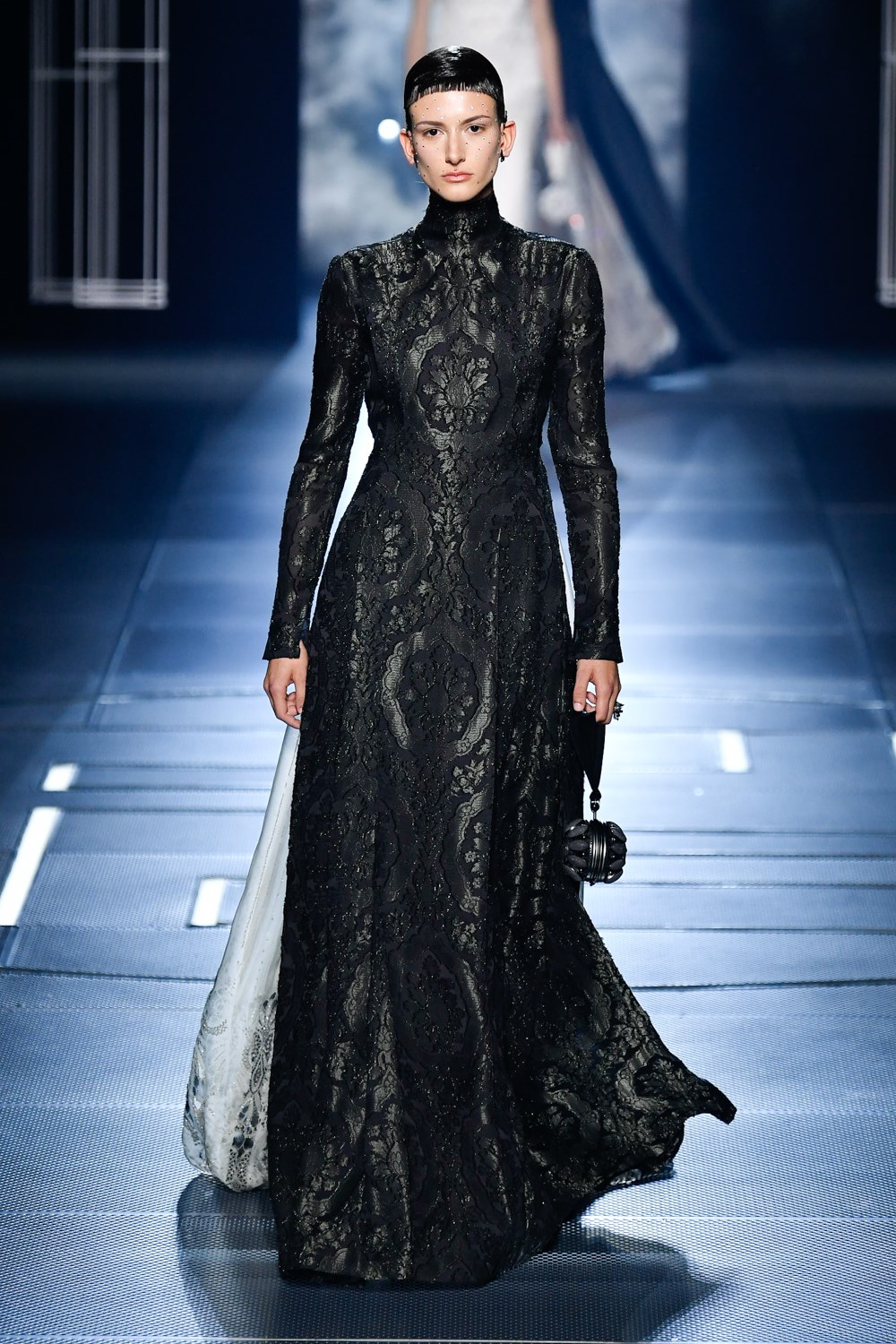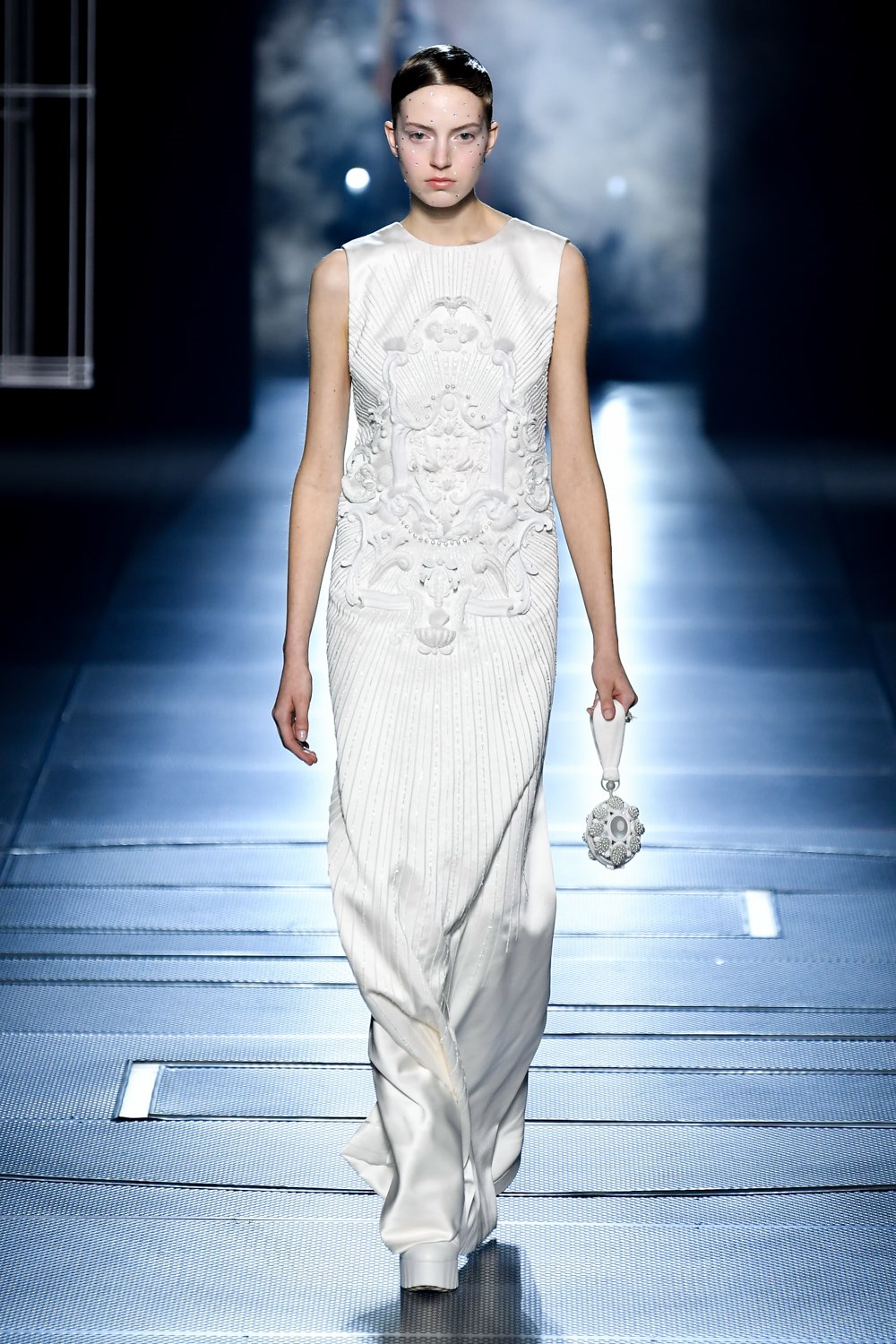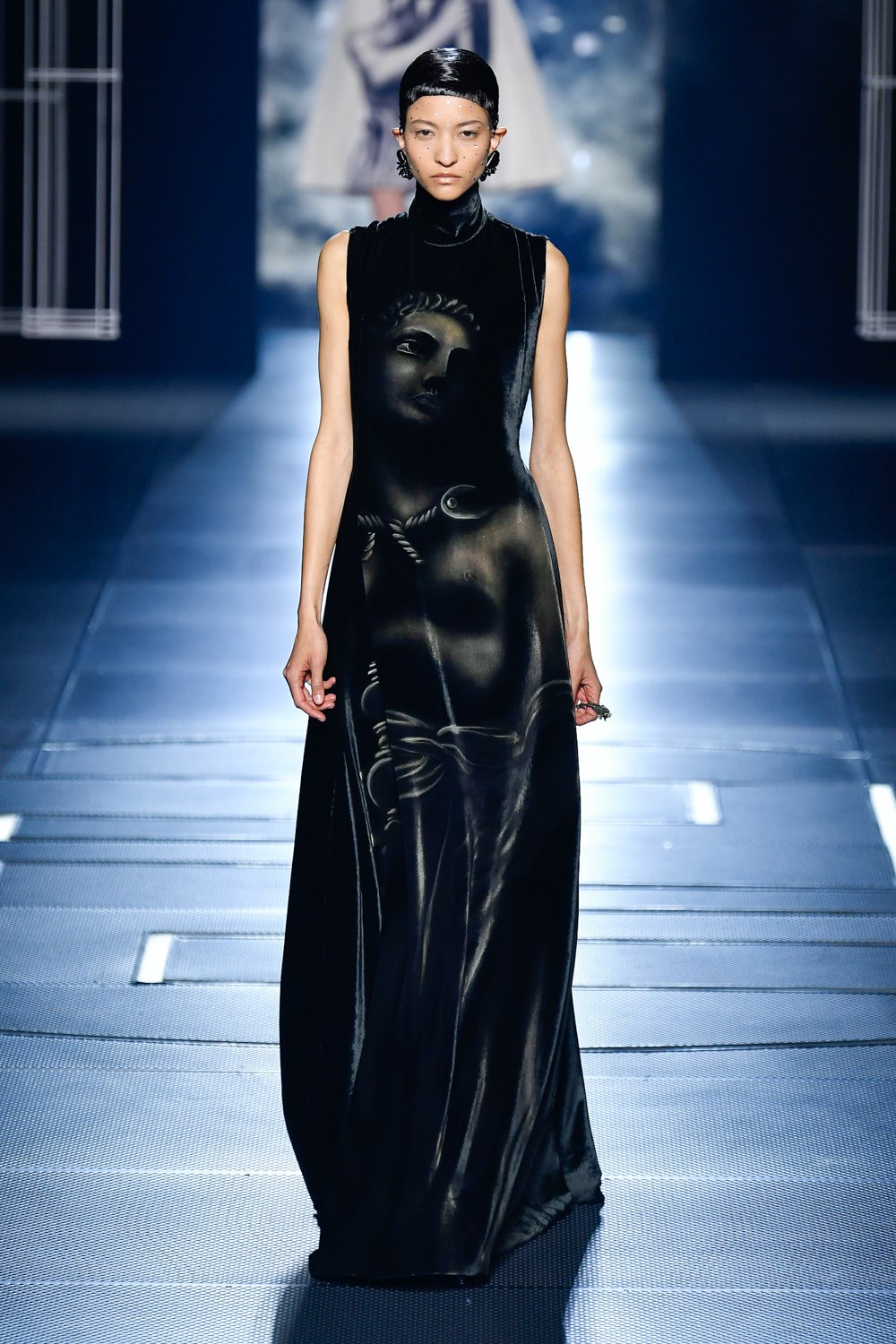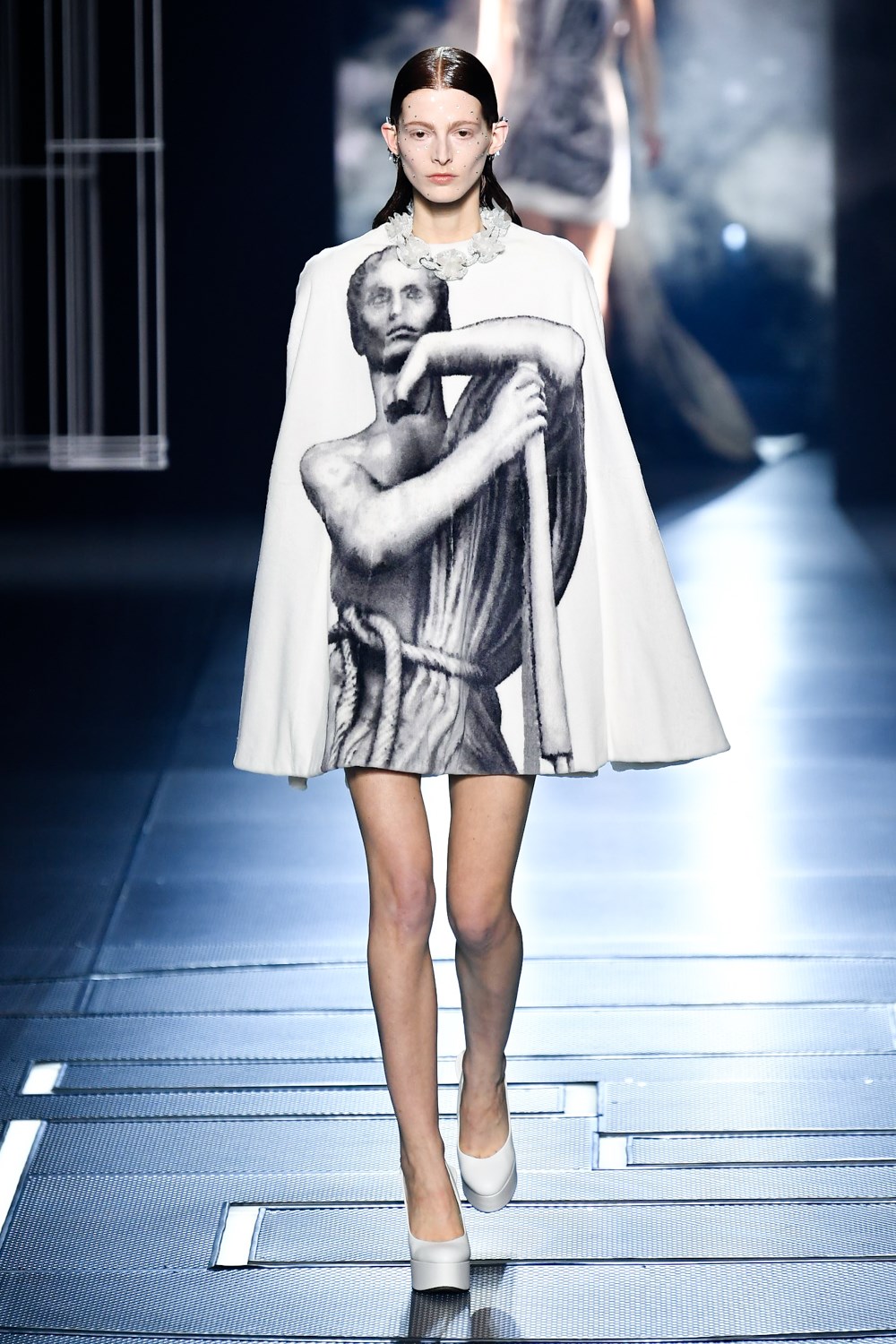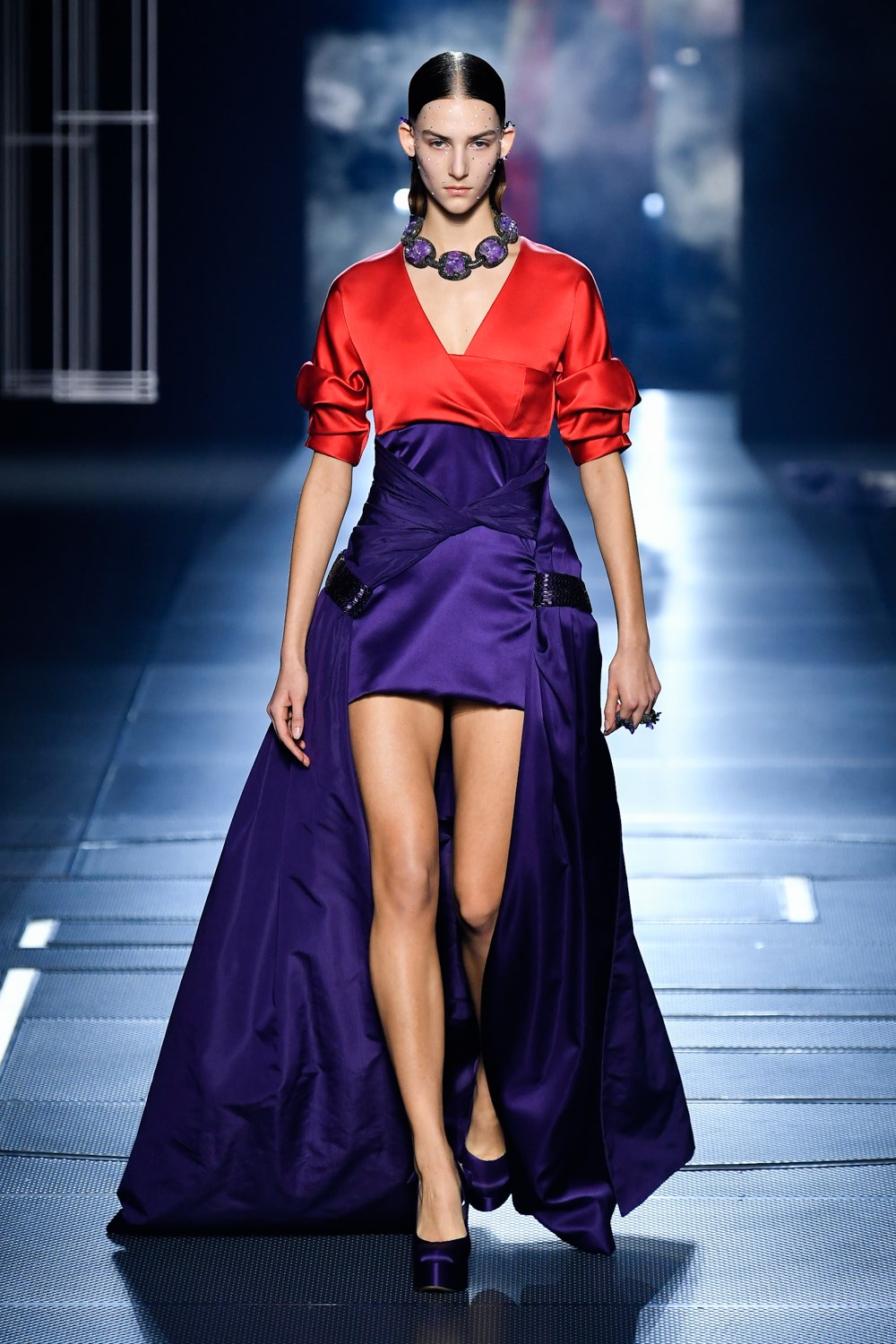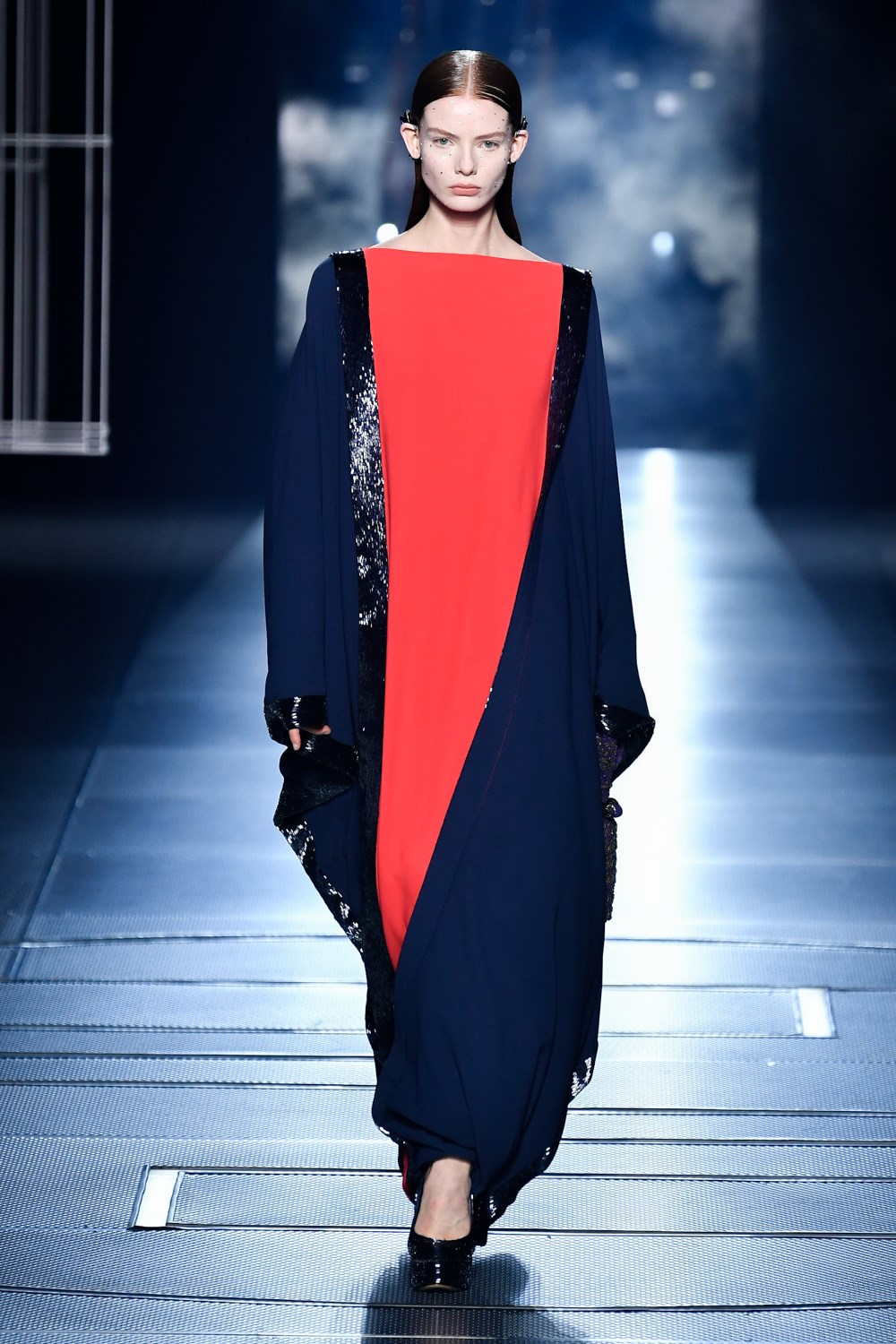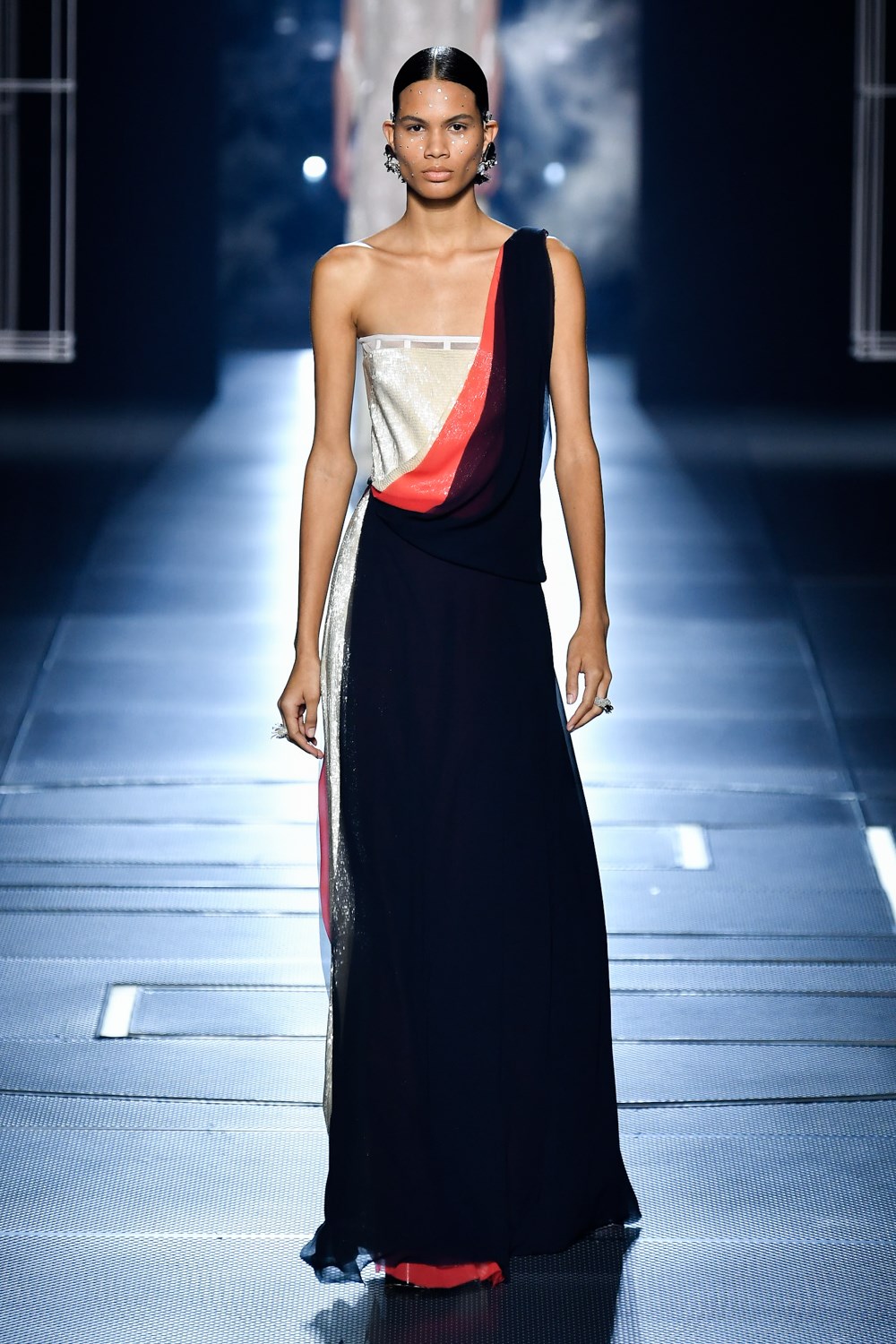Review of Fendi Spring 2022 Couture Fashion Show
Historical Drama
By Mark Wittmer
For his monumental Spring 2022 couture collection, creative director Kim Jones looks to classical and Baroque aesthetics, infusing the house’s codes with motifs drawn from the history of architecture and sculpture.
Through a set created by Alexandre de Betak’s production house Bureau Betak, which used inventive lighting on hanging wire structures to create a digitized deconstruction of a Roman temple, models strode in looks that gave Fendi’s signature Roman heritage a nocturnal and regal flare.
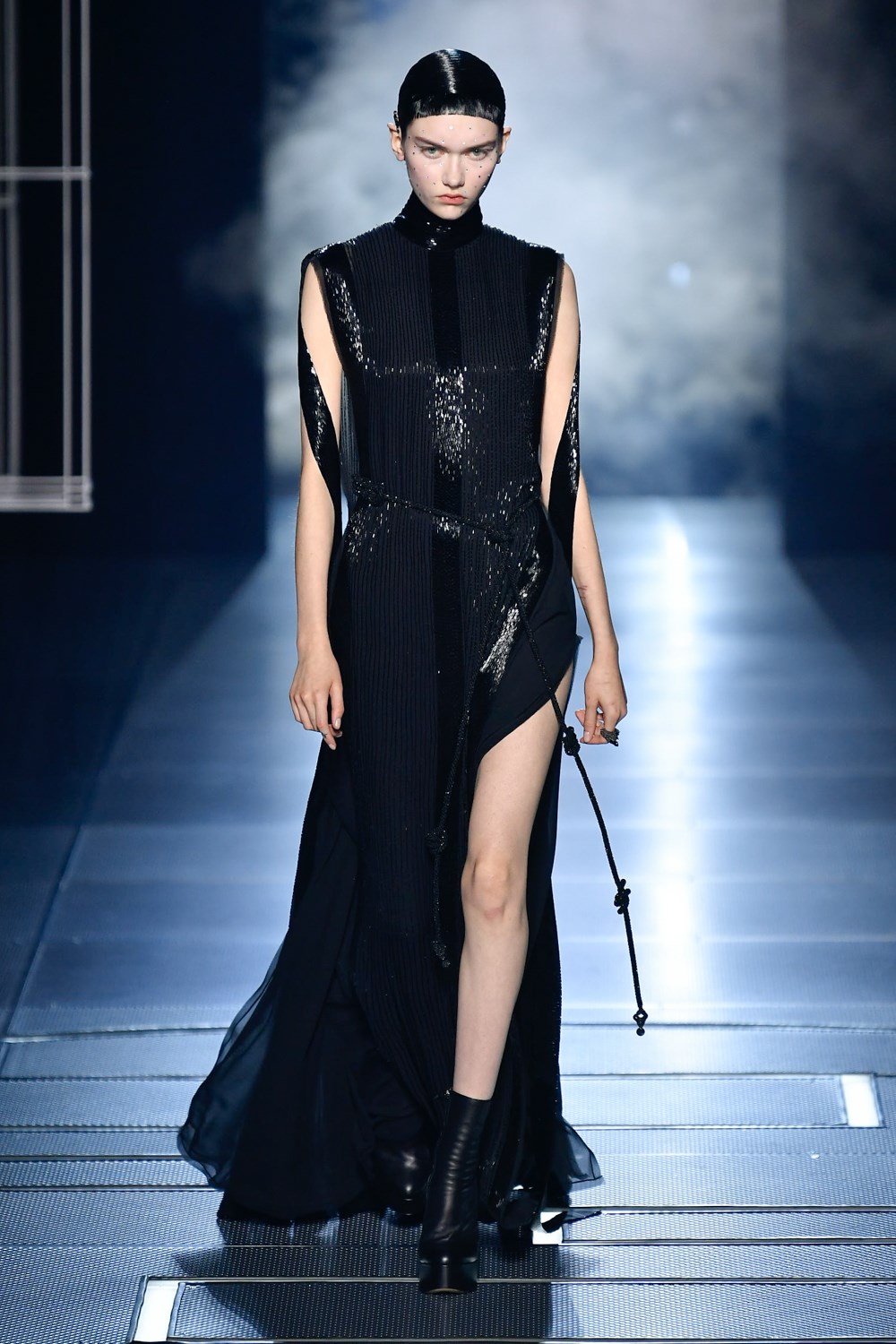
The first few looks, deadly black evening dresses with subtle details of shimmer, established the collection’s primary long and lean silhouette, mirroring the skeletal pillars of the set design.”
Jones also infuses Baroque elements, the likes of which we might see adorning the ceilings and facades of a 17th-century Roman Catholic church, into his gowns through intricate, three-dimensional embroidery and appliqué. Prints of marble sculptures also appear and stretch across the entire front of a dress – perhaps an interesting suggestion of what changes and remains as art transforms over time, as these once three-dimensional sculptures are rendered flat on fabric, which is then brought back to three-dimensional life by its wearer.
After the nocturnally monochrome palette of black, white, gray, and midnight blue that characterizes the first half and change of the show, Jones begins to deploy a color palette that we haven’t really seen from Fendi before: regal red and imperial purple. In addition to the established silhouettes, these colors appear on dresses that bring to mind the toga-like gowns of Roman empresses.
The collection impressively managed to dive deep into these themes of antiquity without ever feeling antiquated, and in fact balanced this reverence for the past with an exciting turn toward the cutting-edge – a theme smartly supported by the digital-infused set design and finishing details, particularly how the models’ rhinestone studded faces recall the dot-matrix makeup worn by CGI actors. Kim Jones shows both a sophisticated understanding of the house’s design identity and a willingness to go beyond these codes to explore how an interconnected art history can continue to shape contemporary experience and expression.
